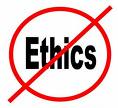
April 2012 will be a traumatic time for many 401(k) plans.
That’s when 401(k) plans will be forced to disclose the fees they pay to their plan administrators. For many plans, this will not be easy. Like a low tide, it will show which plans are well managed and which have been wasting their money on unnecessary services that increased plan costs and wasted corporate funds.
It will also be a shock to many plan participants, especially when they see how some of this money could have been better used to increase contributions or provide better investment alternatives inside of their plans.
How bad can some of these mistakes be?
Take the case of a $3 million 401(k) plan that was contemplating a change to a new plan administrator. The 401(k) plan is currently being serviced by a broker on an insurance company platform. The plan has been on this platform for over 10 years. If the plan decides to change their plan’s platform, the insurance company will charge them $130,000 to make the change.
Why? “Clearly, the broker has socked the plan with a platform that really does not suit their needs as the alternatives laid out with the same insurance company provider is high in fees as well,” according to Ary Rosenbaum, an ERISA/ retirement plan attorney, in Garden City, New York.
“There are plans like this everyday, who are paying too much in fees or unaware of any hidden charges should they decide to change providers. This is why we have fee disclosure coming in April 2012, to curb these type of abuses,” Rosenbaum said.
What to Expect in 2012
When new Department of Labor (DOL) regulations go into effect in 2012, it will mark the first time that plan providers and plan sponsors must disclose actual plan expenses. This will include whether the payment were made directly to the plan administrator or indirectly, through fee waivers or revenue sharing deals.
An Incalculable Loss
Also, on Dec. 27, 2011, the DOL will implement regulations allowing for plan participants to receive 401(k) advice from plan providers. In a widely-watched move, the DOL also is expected to change the definition of a retirement plan fiduciary. This fiduciary label carries a higher “standard of care” and raises the long-avoided issue of conflicts-of-interest between plan providers and the products and advice they provide to plan participants.
In short, it means that if a plan participant asks “Is this the best fund for me?” the plan provider has to give a much more reasoned and substantiated answer, not one shaped by revenue sharing deals or because it is a “favored” in-house fund.
Of course, all the new disclosure requirements come at a critical time for many plan participants. Getting objective advice will help close some obvious gaps which bettered the needs of advisers and plan providers at the expense of plan participants.
But it will not compensate for the lost returns, lost time, lack of disclosure and conflicts-of-interest that dearly cost plan participants. That monetary loss is incalculable and it could have easily been prevented if plan sponsors were simply acting in the best interests of their own employees.
But because many employers allowed these conflicts-of-interest to fester for years, it also eroded the trust between employers and their own workers. This is not widely discussed, but this erosion of trust made it easier for the mass layoffs and the prolonged unemployment which is now common.
It’s amazing to think that only a few generations ago, many workers earned pensions after working for the same company two or three decades. That is unthinkable today. And it has profound implications for the American workforce and for the concept of retirement in America.










